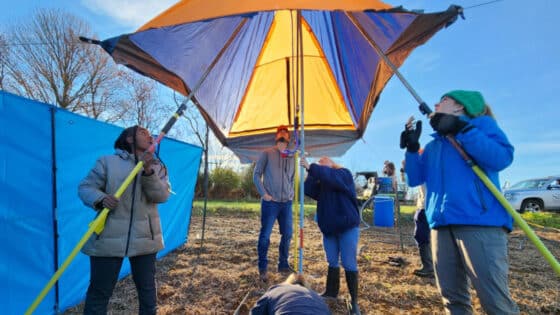Ensign, S.H., and H.W. Paerl. 2006. Limnology and Oceanography: Methods 4(10):399–405.
Abstract
Water quality monitoring of estuarine ecosystems relies on measurement of biogeochemically important elements, including nitrogen (N), phosphorus (P), carbon (C), and silicon (Si) at a time‐step relevant to the environmental conditions affecting the estuary. To improve the temporal resolution of sample collection from the Neuse River estuary, North Carolina, USA, a water sampling system was installed on a state‐operated motor vehicle ferry. A gravity‐filtration device consisting of a plastic cylinder (15 cm long, 4 cm wide) with a 0.7 µm pore size filter at the bottom was suspended inside the mouth of the collection bottle. Dissolved organic nitrogen (DON), orthophosphate, dissolved organic carbon (DOC), ammonium, and silica were analyzed from filtered water samples, whereas nitrate plus nitrite analysis required acidification of samples in addition to filtration. Refrigerated storage of samples for 7 days had minimal effect on nutrient concentrations. A daily sample collection scheme was employed during September and October 2005 in the Neuse River estuary. There were relatively minor changes in N, P, C, and Si nutrients during and after passage of Hurricane Ophelia in September, but high concentrations of ammonium, silica, and orthophosphate occurred at the onset of high riverine discharge during a separate storm in October. In contrast, DOC, nitrate plus nitrite, and DON reached highest values after the peak riverine discharge. This high temporal resolution sampling regimen was essential for examining estuarine response to brief meteorological and hydrologic perturbations and is applicable to many other estuaries worldwide.


